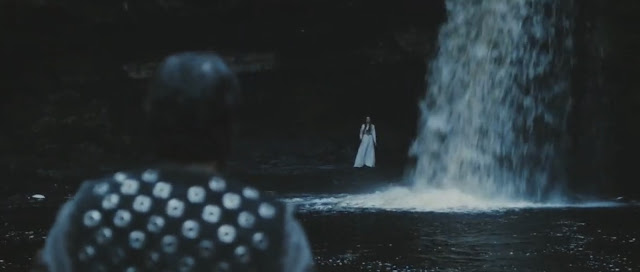I stumbled upon this film while I was looking for Merlin, the previous stop on my Arthurian films tour. It’s very recent (released in 2020) but pretty obscure, starring nobody I’ve ever heard of and bearing an ugly rash of one-star reviews. Most of the one-star reviews rightly point out that it has a clumsy and misleading title: Merlin is not by any definition a Knight of Camelot, and even if he were, he’s only in this film for about five minutes (he’s played rather well by Richard Brake).
Anyway, it’s interesting to see someone taking that cinematically neglected bit of Arthurian lore and trying to spin it into a film, even if the film doesn’t really work. It has Arthur (Richard Short) losing both Excalibur and his mojo during this European expedition. When word arrives that his regent Mordred (Joel Phillimore) is plotting to take over his kingdom and marry Guinevere (Stella Stocker) he sets out for home - this bit is borrowed from Malory, where Arthur raises the siege of Lancelot’s castle to head home and settle Mordred’s hash. But in Malory he takes a whole army with him, where here he has only a small band of followers. They’re called Sir Tristan, Sir Perceval etc, but they’re rough, tough fighting men, more like outlaws or guerillas than knights, and very similar to Arthur’s gang in Guy Ritchie’s King Arthur: Legend of the Sword. I imagine this is why the European war appealed to director Giles Alderson and screenwriter Stephen Cotton: it means they can show an Arthur who is an outcast rebel against tyranny rather than a reigning monarch.
Unfortunately it leads to a rather plodding sort of film, cutting between endless scenes of Mordred being brooding and/or beastly at Camelot and endless scenes of Arthur and co tramping through the forests on their way to an underwhelming final confrontation. The forest scenes feel like a grungy version of Robin Hood. The Camelot scenes feel like it’s aiming for dumbed-down Shakespeare, or that Netflix film The King with Timothée Chalamet as Henry IV, or maybe Game of Thrones (my knowledge of GOT comes from skimming about half way through the first book and deciding it would Never Catch On, but I think I got the general idea). It’s really not up to much, but I don’t want to be too hard on it since I get the feeling that a tiny budget has been stretched to breaking point in a heroic effort to make it: it’s a wonder it exists at all.
The photography is often very good, using mostly natural light, with candles in the interior scenes. Camelot is filmed in an actual castle (Caerphilly, I think?): vast, draughty, stone halls, with not much furniture and wan grey light spilling through the windows. The forests are in full summer leaf, and almost as dark.
Most importantly, there are a couple of supernatural encounters which I thought worked very well, precisely because of their simplicity - there’s none of the CGI morphing of Merlin or Green Knight, just a little mist, and figures who appear and then vanish again between shots. Amid all the dreary Game of Thrones-ing there is one scene which delivers EXACTLY what I want from an Arthurian film. Arthur, wandering in the woods alone, comes to a waterfall. Wading into the plunge pool, he finds himself face to face with the Lady of the Lake, a spooky young woman who appears suddenly, standing waist deep in the dark water. She says nothing, just stares at him, then ducks beneath the surface. Beautiful, uncanny, and haunting, it’s a moment of magic in a flawed movie.
And the waterfall, I think, is one of the ones near Ystradfellte where I got the first inklings of the idea for Here Lies Arthur…







Comments